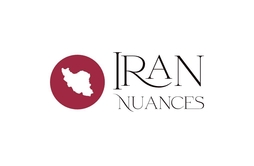In a recent development that has drawn international attention, Palestinian officials, including Hamas leader Ismail Haniyeh, have made a significant visit to Tehran.
The visit by Haniyeh to Tehran comes at a critical juncture, following the United Nations Security Council’s (UNSC) resolution calling for an immediate ceasefire in Gaza. The resolution, which was not vetoed by the United States, has been met with criticism from Israel, indicating a shift in the diplomatic landscape.
During his visit, Haniyeh met with Iran’s Supreme Leader Ayatollah Ali Khamenei and Foreign Minister Hossein Amirabdollahian. In a press conference, Haniyeh remarked on the UNSC resolution, suggesting that it reflects Israel’s growing isolation. Haniyeh stressed Israel’s failure to achieve its military and strategic objectives. He further criticized the US government’s involvement in the conflict, denouncing it as an accomplice in Israeli actions.
Ayatollah Khamenei, on his part, assured Haniyeh of Iran’s unwavering support for Gaza and Palestine. This sentiment was echoed by Ziyad Al-Nakhalah, Secretary-General of the Palestinian Islamic Jihad movement, who, while attending a gathering in Tehran’s Azadi Stadium, expressed confidence in Palestine’s eventual triumph with Iran’s backing.
Contrasting with Haniyeh’s previous, more discreet visit in November, this trip was highly publicized, with photographs and press releases documenting the meetings. This public display is indicative of a strategic message being sent to the international community about the solidarity between Iran and Palestinian officials.
Haniyeh’s discourse in Tehran intimates that Hamas is sensing a tilt in the balance of power in its favor. The United States’ diminished assertiveness at the UNSC, paired with internal discord with Israel, narrates a tale of eroding support for Israel from its quintessential ally.
The visit by Palestinian officials to Tehran is a manifestation of the evolving dynamics in Middle Eastern politics. It serves as a statement of defiance against Israel and a showcase of the strengthening ties between Iran and Palestinian factions. The public nature of the visit and the statements made by both Palestinian and Iranian leaders underscore the significance of this event as a marker of shifting alliances and the potential for a new phase in the longstanding conflict.
It is important to note that the situation in the Middle East is complex and fluid, and the implications of such visits can have far-reaching consequences for regional stability and peace efforts.






